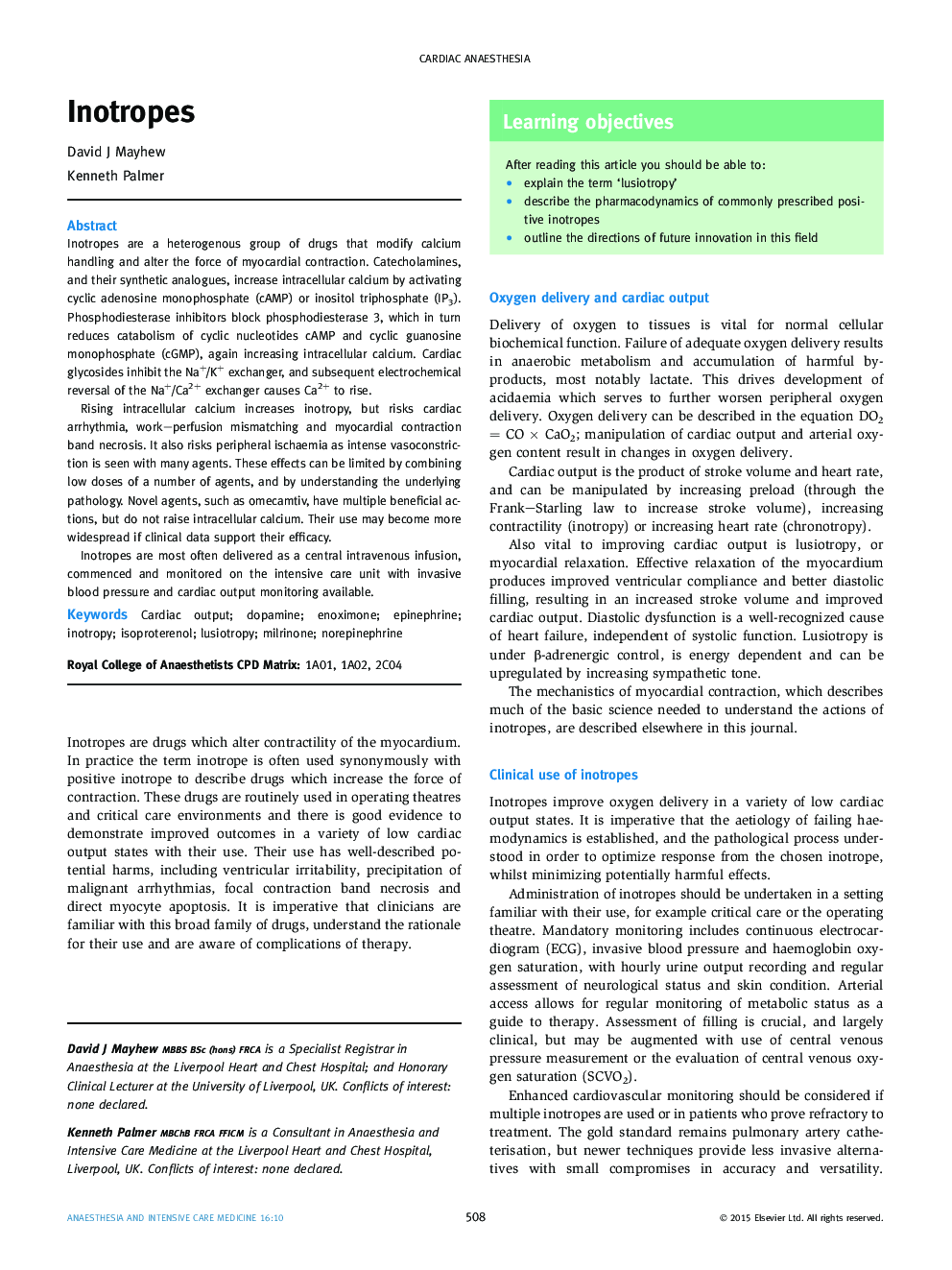| Article ID | Journal | Published Year | Pages | File Type |
|---|---|---|---|---|
| 2742153 | Anaesthesia & Intensive Care Medicine | 2015 | 5 Pages |
Inotropes are a heterogenous group of drugs that modify calcium handling and alter the force of myocardial contraction. Catecholamines, and their synthetic analogues, increase intracellular calcium by activating cyclic adenosine monophosphate (cAMP) or inositol triphosphate (IP3). Phosphodiesterase inhibitors block phosphodiesterase 3, which in turn reduces catabolism of cyclic nucleotides cAMP and cyclic guanosine monophosphate (cGMP), again increasing intracellular calcium. Cardiac glycosides inhibit the Na+/K+ exchanger, and subsequent electrochemical reversal of the Na+/Ca2+ exchanger causes Ca2+ to rise.Rising intracellular calcium increases inotropy, but risks cardiac arrhythmia, work–perfusion mismatching and myocardial contraction band necrosis. It also risks peripheral ischaemia as intense vasoconstriction is seen with many agents. These effects can be limited by combining low doses of a number of agents, and by understanding the underlying pathology. Novel agents, such as omecamtiv, have multiple beneficial actions, but do not raise intracellular calcium. Their use may become more widespread if clinical data support their efficacy.Inotropes are most often delivered as a central intravenous infusion, commenced and monitored on the intensive care unit with invasive blood pressure and cardiac output monitoring available.
